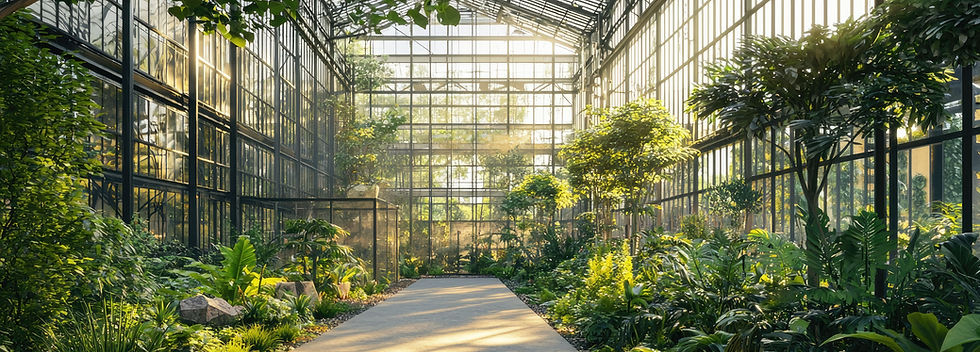
EXPO MASTER PLAN
Designing an International Horticultural Expo in the USA
Expo 2031 USA is a once-in-a-generation opportunity — a six-month global showcase that will bring millions of visitors and the world’s spotlight to American innovation, culture, and horticulture.
U.S. Grower Investor Partners don’t just supply plants — they become part of the story. U.S. Grower Investor Partner products are purchased for thematic Expo Zone landscapes. Grower Partner brands are showcased to millions, and Grower Partners are recognized as a design leader in front of global media, trade delegations, and industry peers.
EXPO LANDSCAPE DESIGN
In a World Horticultural Exposition, the landscape and architectural design elements are crucial because the event serves as a showcase of global horticultural excellence, cultural expression, and sustainable innovation. The most important elements usually fall into five interconnected categories:
Master Planning & Spatial Organization
-
Thematic Zoning: Separate areas based on themes
-
Circulation & Accessibility: Wide pedestrian promenades, shaded walkways, ramps, and well-connected pathways
-
Focal Points: Central plazas, iconic pavilions, and landmark sculptures for orientation and gathering
-
View Corridors: Framing vistas toward significant structures or landscapes
Landscape Design Elements
-
Signature Gardens:
-
National gardens (each participating country designs a display)
-
Thematic gardens (e.g., desert landscapes, tropical forests, urban rooftop gardens)
-
-
Water Features: Reflecting pools, waterfalls, interactive fountains, and wetlands for cooling and ambiance
-
Plant Collections: Rare species, seasonal blooms, vertical gardens, and climate-adapted plantings
-
Topography & Landform: Gentle mounds, terraces, and earthworks for visual interest and microclimates
-
Shade & Shelter: Pergolas, green canopies, and tree-lined boulevards for comfort
Architectural Design Elements
-
Main Entrance Gateways: Iconic, symbolic structures that embody the Expo theme
-
Pavilions:
-
National Pavilions—express local culture, architecture, and plant heritage
-
Thematic Pavilions—focus on topics like health and wellbeing, sustainability, technology, and biodiversity
-
-
Observation Towers & Platforms: For panoramic views of the exposition grounds
-
Event Spaces: Open-air amphitheaters, covered stages, and exhibition halls
-
Sustainable Architecture: Solar-powered roofs, rainwater harvesting systems, and recycled materials
Sustainable & Ecological Features
-
Green Infrastructure: Bioswales, living roofs, green walls, and permeable paving
-
Energy Solutions: Solar shading structures, wind turbines, geothermal cooling
-
Water Management: Greywater recycling, drip irrigation, and stormwater gardens
-
Biodiversity Corridors: Habitats for pollinators, birds, and aquatic species
Cultural & Experiential Enhancements
-
Art Installations: Floral sculptures, kinetic art, and botanical-inspired structures
-
Night Lighting: LED-illuminated pathways, garden lighting, and projection mapping on plants and buildings
-
Interactive Zones: Hands-on horticulture workshops, children’s gardens, sensory gardens
-
Seasonal Programming: Festivals, floral parades, music performances, and cultural showcases
EXPO ZONES
The Expo 2031 Horticultural Design Landscape
Expo 2031 USA is comprised of a collection of Expo Site Zones
5 Thematic Climate Zones stage the Expo 2031 Experience
IN EVERY ZONE

1
Landscape Elements
-
USDA Climate Plant Palette
-
Flowers
-
Plants
-
Trees & Shrubs
-
-
Microclimates
-
Seasonal Gardens:
-
Rotating beds to highlight peak bloom periods.
-
Tree & Shrubs matching climate
-
2
Architectural Features
-
Climate-Adaptive Pavilions
-
Seasonal Viewing Structures
-
Raised Decks
3
Education & Interpretive
-
“Hardy Plant Champions” Exhibit: Explaining plant traits that allow survival in −20°F temperatures.
-
Interactive Climate Garden: Visitors adjust irrigation, shading, and plant choices to see virtual seasonal effects.
-
Demonstrations:
-
Cold frame and hoop house gardening.
-
Composting in cold climates
-

4
Cultural & Arttistic
-
Plant Palette:
-
Spring
-
Summer.
-
Fall
-
-
Microclimates
-
Seasonal Gardens:
-
Rotating beds to highlight peak bloom periods.
-
Tree & Shrubs matching climate
-
5
Visitor Amenities
-
Climate-Adaptive Pavilions
-
Seasonal Viewing Structures
-
Raised Decks
6
Partner Recognition
-
“Hardy Plant Champions” Exhibit: Explaining plant traits that allow survival in −20°F temperatures.
-
Interactive Climate Garden: Visitors adjust irrigation, shading, and plant choices to see virtual seasonal effects.
-
Demonstrations:
-
Cold frame and hoop house gardening.
-
Composting in cold climates
-







.png)
_JPG.jpg)
_JPG.jpg)
_JPG.jpg)
_JPG.jpg)
_JPG.jpg)



